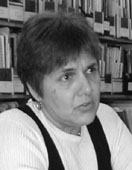Unchartered Time for the American Child
Hazard or Hope?
The percentage of mothers working outside the home has almost doubled in the United States since 1975. As a consequence, more American families than ever depend on nonmaternal care for their infants, children, and teens during working hours. Yet, strikingly few federal policies address the need for high-quality child care.
In the arena of afterschool education, however, change is afoot. Recent studies have documented that juvenile crime rates triple in the hours immediately after school. Heightened public awareness of these findings prompted the U.S. Department of Education to make a substantial investment of $846 million in out-of-school time programs for 2002. Harvard has joined others in leading Boston’s own $23 million initiative to improve afterschool education in the community.
But what models will be most effective for young and school-age children? What is the public’s responsibility in ensuring high-quality care for children from infancy through the teenage years?
We asked three Harvard Graduate School of Education faculty members these questions. Professor Kathleen McCartney, specializes in child-care research, child development, and social policy. Instructor Heather Weiss is the founding director of the Harvard Family Research Project, which assesses family support programs, services, and policies and contributes to their development. Associate Professor Gil Noam directs the Program in Afterschool Education and Research (PAER) at HGSE and the Laboratory of Developmental Psychology of Harvard Medical School at McLean Hospital.
Kathleen McCartney: “Deadbeat Day-Care”

America’s “Deadbeat Day-Care Policy” has created deep social inequities. Wealthy people can afford to pay for quality child-care, while poor people have fewer options, and their children often end up in low-quality care. Child care has one of the highest turnover rates of any industry-no surprise considering that the average child-care worker in 1998 earned $14,820 a year.
The National Institute of Child Health and Human Development initiated a study in 1991 in which researchers followed more than 1,300 children over 10 years. As one of the investigators in the study, I looked at day-care centers that meet the American Public Health Association’s recommendations for quality care. This work is relevant to the social policy of child care to date.
The question we must ask is, “How can we create policies that ensure higher quality, affordable care for every family?” We can regulate teacher training and staff-child ratios that will ensure warm and enriching interactions between teachers and children. Many western European countries are way ahead of us in that. They are interested in funding child care in the way that our nation is interested in funding public education. They’ve realized there are opportunities for learning well before kindergarten.
In the United States, we place much more emphasis on individualism than on community. Perhaps for that reason we expect families to care for their children on their own. Even vocal child advocates have not dared raise the question of universal child care in this country. Parents, advocacy groups, and scientists like me who are trying to bridge the gap between research and policy must take the lead in that dialogue.
Heather Weiss: “A Complicated and Contentious Issue”

As a nation, we’re now mak-ing an enormous financial commitment to improving the availability and the quality of services for school-age children in their out-of-school time. This is a complicated and sometimes contentious issue. Given the universal press to improve school performances, some argue that schools should get and use these funds to provide remedial or academic services to promote academic achievement. Others, including many who have historically provided out-of-school services-Big Brothers, Big Sisters, the Boys and Girls Club, Girl Scouts, YWCA-argue for a broader mix of services, including those that focus on children’s creative, recreational, social or moral development. To create effective programs that address child development, student achievement, healthy family functioning, and community development, there need to be more conversations between practitioners, researchers, and funders.
Opinion polls suggest that afterschool education is popular because people see it as a way to improve children’s learning and academic achievement. Unfortunately, we have not yet agreed to put this kind of money into child care because we mistakenly assume that child care doesn’t contribute to academic achievement. We’re struggling to get money into child care in a way we haven’t in the afterschool arena.
If we want to build an effective educational system for children of all ages, we must start by educating ourselves. And we should never say one size fits all. A community must debate and decide about the availability, quality, and variety of services it wants for its children both before they start school and in their out-of-school time.
Gil Noam: A Cautionary Note

HGSE started the Program for Afterschool Education and Research (PAER) two years ago, and it has become an integral part of Harvard’s Afterschool Initiative. We are consultants to two leading citywide afterschool initiatives in Boston and in New York. We also partnered within Harvard to answer long-debated questions about what contributes to effective afterschool programs. With the Principals’ Center, we developed training institutes for school leaders. With Project Zero, we are developing innovative project-based curricula. And with Harvard Medical School and McLean Hospital, we are extending our knowledge about prevention programs.
We have found that many of the best afterschool programs connect their activities with what happens during the school day in creative ways that do not simply extend the school day. Our first objective at PAER is to develop strong research and a systematic knowledge base in the field of afterschool education. Our second objective is to develop models and strategies that facilitate learning. Our final objective is to construct training models that foster emotional resiliency, academic achievement, and productive relationships between staff and students. Today, at two schools in Boston, Harvard students, prevention practitioners, teachers, and afterschool staff are working together to provide services, to train employees, and to develop quality programs.
But with all the benefits that good programs can offer, I have a cautionary note: we are now asking out-of-school time to deliver everything schools and families have a hard time accomplishing. People expect that afterschool programs alone will prevent crime, raise test scores, create better peer relations among children, make children more physically active, and produce educated, ethical adults. Such a societal transformation will take place only after a range of institutions come together to promote supportive family policies and invest in education and health in all domains.
We are taking steps in that direction right now. What an opportunity for the University to work with partnering communities while jointly developing strategies that can be used throughout the nation.
Visit http://www.gse.harvard.edu/nv for a related story about community and full-service schools.




